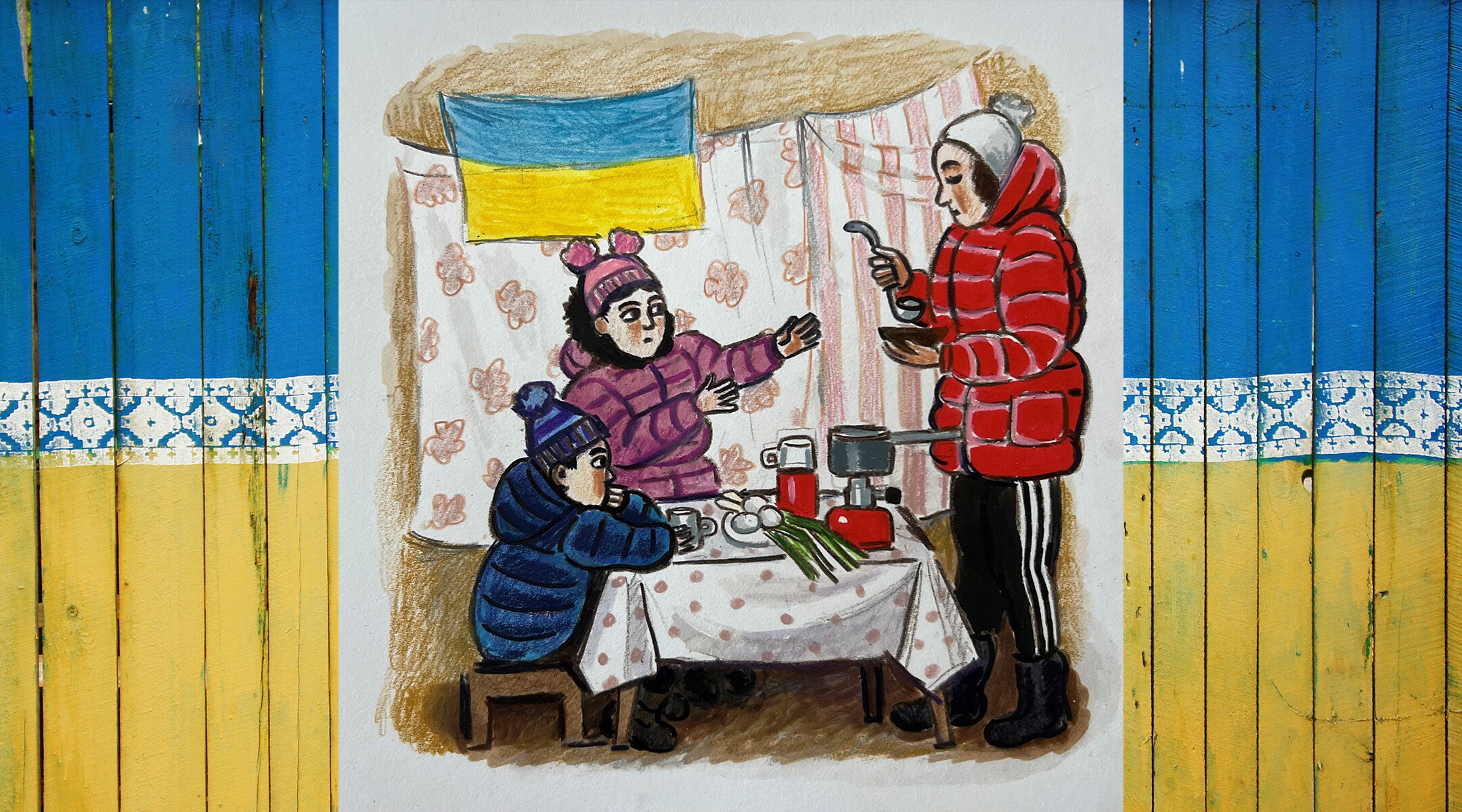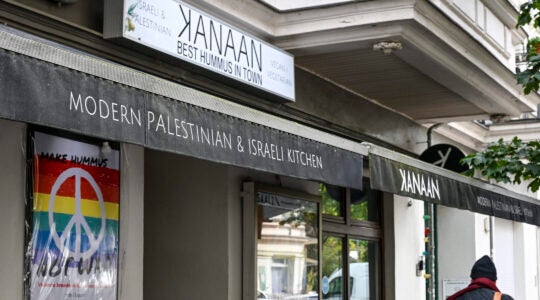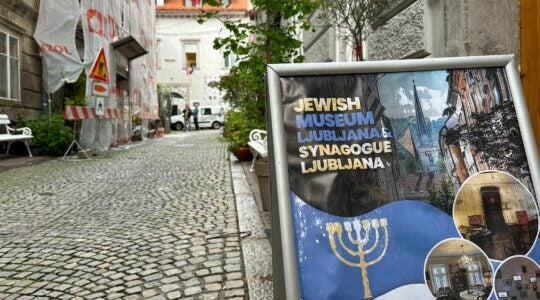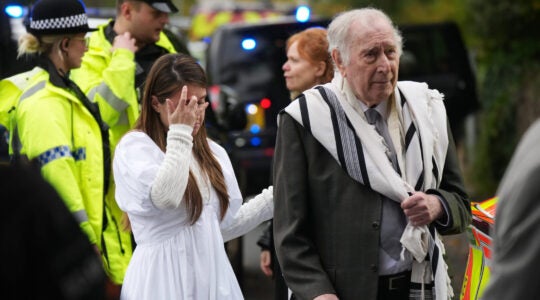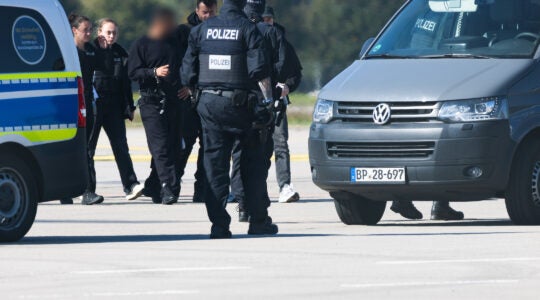(JTA) — For Michal Stamova, the challenge of translating Passover’s core text into Ukrainian started with the title.
The haggadah — the book containing the Passover story — starts with an “h” sound in both Hebrew, its original language, and English. In Russian, the primary language of organized Jewish life in Ukraine until recently, there is no such sound, so the book has long been known there as an “agada.”
Ukrainian does have an “h” sound. But the character representing that sound conveys a different sound in Russian: a “G.” So for many Ukrainian Jews, the cover of Stamova’s translation will read as “Gagada.”
The journey of that single sound reflects the complexity of the task Stamova took on to aid Ukrainian Jews celebrating Passover a year into their country’s war with Russia. A musicologist from western Ukraine who fled to Israel shortly after Russia’s invasion, Stamova was recruited to create a Ukrainian-language haggadah, a powerful sign of the community’s rupture with its Russophone past.
Stamova knew she wanted to base her translation not off the preexisting Russian translation, but from the original Hebrew and Aramaic. That proved challenging because much of the text of the haggadah is lifted from other sources in Jewish canon, but Jewish translations of those texts to Ukrainian are only underway now for the first time.
“At first, it was very difficult to start, because we don’t have the sources in Ukrainian,” Stamova said. “We don’t have Torah in Ukrainian. We don’t have Tanakh in Ukrainian. It was very difficult to know what words to find.”
Stamova’s text, titled “For Our Freedom,” was released online earlier this month in advance of the Passover holiday that starts April 5. It is one of a growing number of efforts to translate Jewish texts into Ukrainian. Translators affiliated with the Chabad-Lubavitch movement have produced a book of psalms and are working on a daily prayer book, with their sights set on a full translation of the Torah. An effort is also underway now to translate a chapter of a newer text associated with Yom Hashoah, the Jewish Holocaust memorial day, in advance of its commemoration this year on April 18.
The absence of those texts until now, despite Ukraine’s significant Jewish population, reflects the particular linguistic history of Ukrainian Jews. Under the Russian empire, Jews living in what is now Ukraine in the 19th century tended to adopt Russian rather than Ukrainian, usually in addition to Yiddish, because Ukrainian was perceived as the language of the peasantry and conferred few benefits. That tilt became more pronounced after World War II and the Holocaust, when Yiddish declined as a Jewish vernacular and Russian became the main language of the Soviet Union. The history helps explain why, even as the number of Ukrainians speaking Russian at home fell sharply over the last decade, Jews remained largely Russian-speaking. (Russian and Ukrainian are related linguistically, though their speakers cannot understand each other.)
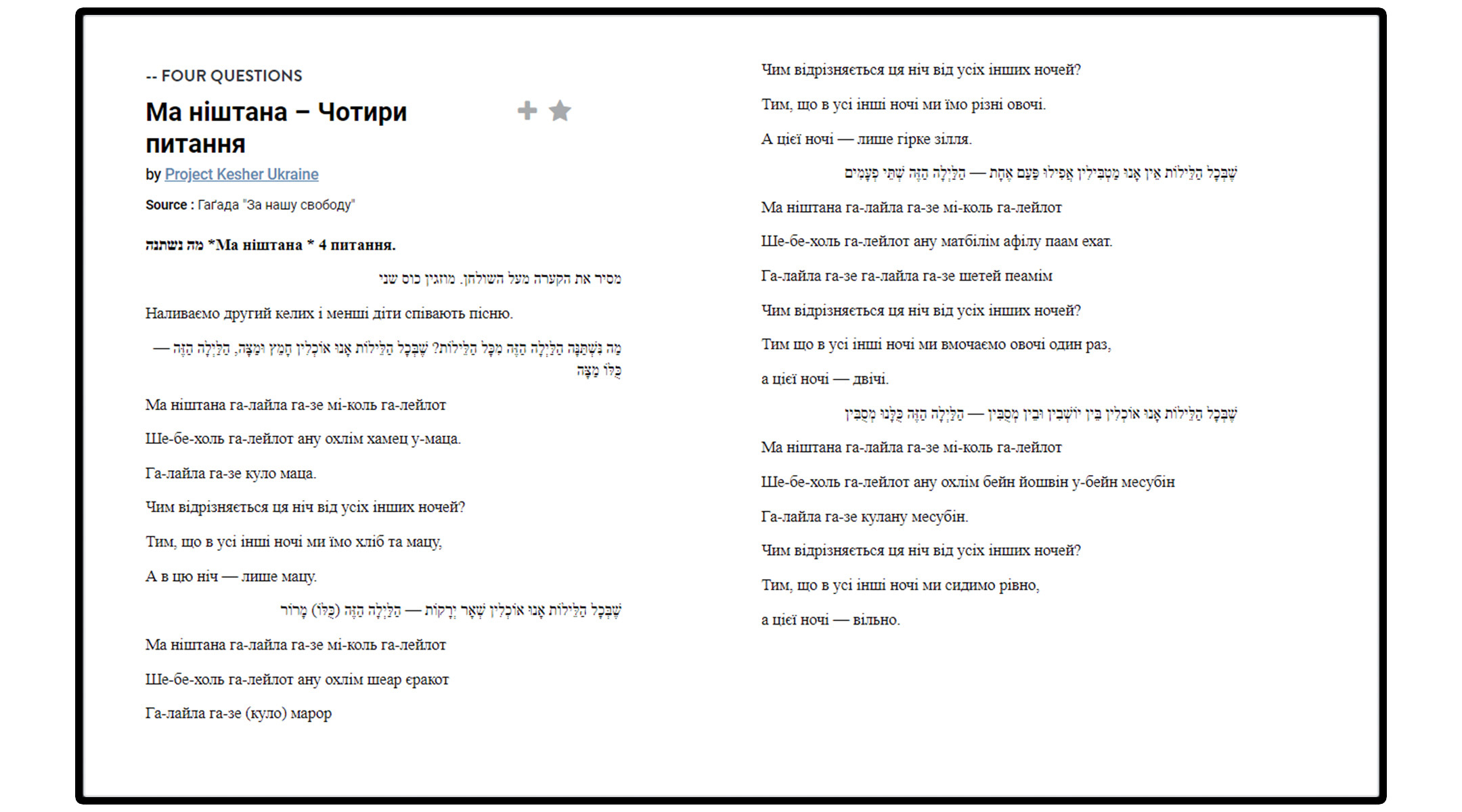
A sample page of text from the haggadah. (Courtesy of Project Kesher)
Over the past 30 years, the vast majority of printed material used by Ukrainian Jewish communities, including haggadahs for Passover, were created in Russian by groups such as Chabad, which is the main Jewish presence in both countries. But after Russia’s invasion, those materials became a liability at a time when being perceived as having ties to the enemy could be dangerous.
Indeed, Russia’s invasion of Ukraine last year prompted many Russian-speaking Ukrainians to switch languages as a marker of national solidarity — and sparked a push to translate Ukraine’s Jewish life into the Ukrainian language.
“Ukrainian Jews always spoke Russian. That really was the norm. With the advent of the escalation of the war, that has shifted, and Ukrainian Jews who are in the country are shifting as fast as they can over to Ukrainian,” said Karyn Gershon, the executive director of Project Kesher, the global Jewish feminist nonprofit that commissioned the new haggadah.
Gershon said the haggadah offers an opportunity to elevate a Ukrainian Jewish identity in other ways, such as by including tidbits about famous Jewish writers from the area that comprises modern Ukraine who in the past might have been characterized only as “Russian.”
“In most of the Jewish world, the things that make a haggadah unique are the special readings,” Gershon said. The new Ukrainian haggadah includes alongside the traditional text, she said, “prayers for the defenders of Ukraine, prayers for peace in Ukraine, but also [passages] reclaiming writers who were always categorized as Russian, but because they came from places like Kyiv, Odessa and Berdichev, are more accurately Ukrainian.”
For example, the haggadah includes passages from the 1925 book “Passover Nights,” by Hava Shapiro, a Kyiv-born Jew and journalist who authored one of the first Hebrew-language diaries known to have been written by a woman.
The additions offer an element of pride for some of the Ukrainian Jews who plan to use the new haggadah.
“It is bringing you to the roots of those Jews who were living here before the Holocaust,” said Lena Pysina, who lives in Cherkasy, southeast of Kyiv. “It’s about rebuilding the Jewish communities in Ukraine as ‘Ukrainian Jews.’”
Pysina said the switch to Ukrainian and the embrace of Ukrainian Jewish history in some ways echoed the themes of the Passover story, which describes the Israelites fleeing slavery in Egypt.
“It’s like an exodus for us. It is not comfortable, because we get used to what we get used to. But we have to be proactive, we have to find our identity,” she said. “It took us 70 years of Soviet times to … celebrate the Jewish holidays and Jewish traditions. And it took us 30 years to understand that we have to build Ukrainian Jewish communities, too.”
Those communities are very much in flux a year into the war, with millions of Ukrainians internally displaced or having relocated overseas. Stamova undertook the haggadah project from Israel, where she is one of an estimated 15,000 Ukrainians who arrived since February 2022.
Stamova grew up in western Ukraine, where the use of the Ukrainian language is more common than in the east. Like most other Ukrainian Jews, she still grew up speaking Russian at home, but her school, university and most of her life outside the home was conducted in Ukrainian. That made her a natural fit for the translation project, along with her background in Jewish liturgy, which she had studied at a Conservative yeshiva in Jerusalem.
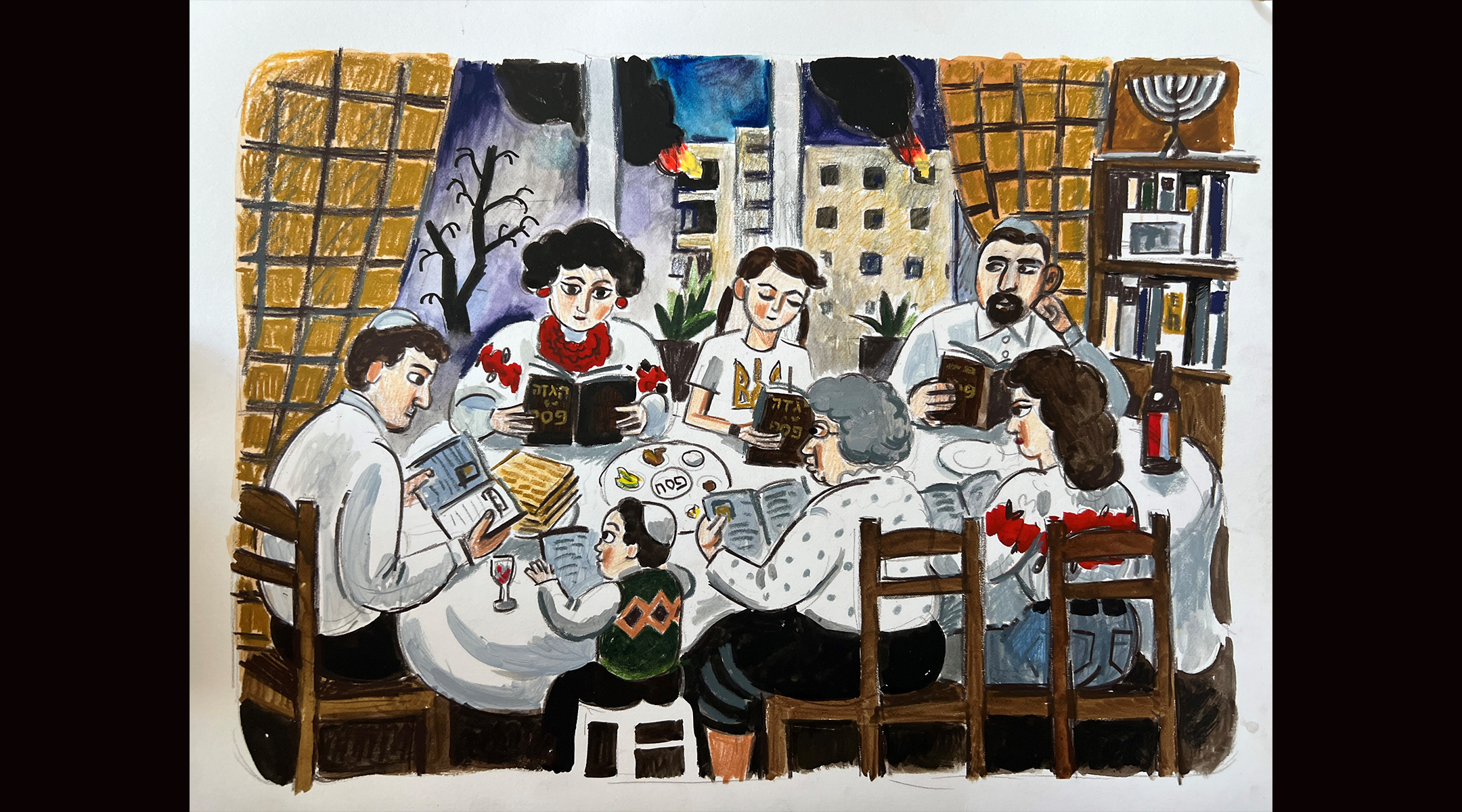
Over the past 30 years, the vast majority of printed material used by Ukrainian Jewish communities, including haggadahs for Passover, were created in Russian. (Courtesy of Project Kesher)
The challenges went beyond phonetics. One frequent question was whether to use Russianisms that are widely known in Ukrainian and would be more easily understandable to a Jewish audience, or to use uniquely Ukrainian words.
The most difficult section of the text, she said, was Hallel, the penultimate step of the Passover seder. Hallel is a lengthy song of divine praise heavy with poetry and allegorical language — making for challenging translation work in any language.
Stamova said she sought to stick to the traditional understanding of the text while also making some adjustments for the contemporary seder attendee. For example, the section of the haggadah about the “four sons” with varying relationships to Judaism is rendered gender-neutral and changed to the “four children” in Stamova’s translation — an adjustment that has been made in other languages, too.
Most of all, Stamova said, she hopes the haggadah offers some solace to Ukrainian Jews whose entire lives have been turned upside down.
“The Jewish tradition of Pesach is that we every year have to remember that we escaped from Egypt, from slavery. It’s very therapeutic,” Stamova said, using the Hebrew word for Passover. “How is it like therapy? Yes, we every year remember this difficult story, but then we have a plan for the future, we say next year in Jerusalem. So we have to have a plan. We have to see the future.”
JTA has documented Jewish history in real-time for over a century. Keep our journalism strong by joining us in supporting independent, award-winning reporting.
